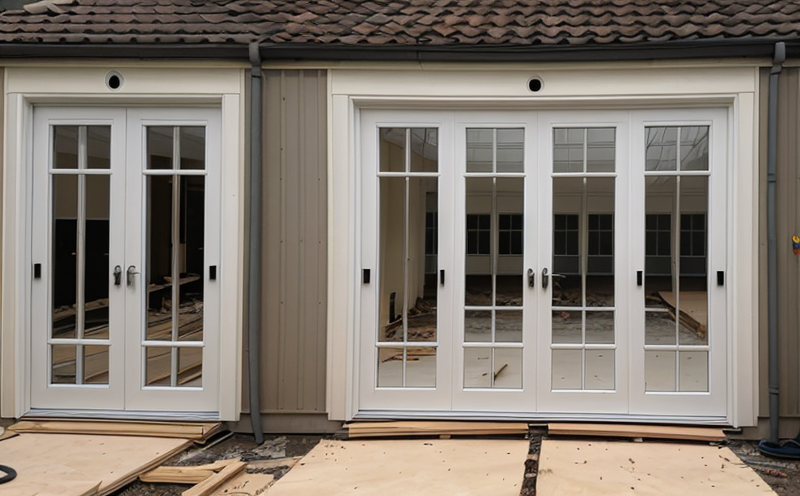Smoke Control Testing in Door Assemblies
Smoke control testing is a critical component of fire safety compliance and design integrity. In door assemblies, this test evaluates the ability to contain smoke within a building during a fire event. This ensures that escape routes remain clear for occupants while minimizing exposure to toxic fumes.
The primary objective of smoke control testing in door assemblies is to determine how effectively they can prevent the spread of smoke and hot gases from one part of a building to another. This is achieved by subjecting the door assembly to controlled fire conditions, typically using standard test methods such as ISO 9735 or ASTM E1360.
During these tests, various parameters are monitored to assess the performance of the door assembly. These include the rate of smoke generation, the amount of smoke leakage around the edges of the door, and the temperature rise on the unexposed side of the door. The test setup usually involves a room where the fire is ignited under controlled conditions, with the door assembly placed in one wall.
The testing process begins by preparing the specimen according to specified standards. This includes ensuring that all components are correctly installed and aligned. Once prepared, the door assembly undergoes exposure to a standard fire source for a set duration. After the test is complete, detailed measurements are taken of smoke generation rates and leakage levels.
Fire safety regulations vary by region, but globally, compliance with standards such as ISO 9735 or ASTM E1360 ensures that door assemblies meet international quality benchmarks for fire resistance and smoke control. The results of these tests provide critical data to architects, engineers, and building owners for design validation and regulatory approval.
Smoke control testing is particularly important in high-risk areas such as hospitals, schools, and public buildings where the rapid spread of smoke can significantly impact emergency response times. In industrial settings, it helps ensure that fire safety protocols are adhered to, minimizing potential damage and ensuring worker safety.
Industry Applications
The need for effective smoke control in door assemblies is particularly pronounced in sectors where the rapid spread of smoke can lead to severe consequences. Hospitals are a prime example, where maintaining clear evacuation routes is crucial during emergencies. Schools also benefit from robust smoke control measures as they house large numbers of children who may not be able to navigate complex fire scenarios effectively.
In commercial buildings, especially those with multiple floors and complex layouts, proper smoke control in door assemblies can significantly reduce the risk of casualties during a fire event. This is particularly relevant for high-rise office complexes where vertical evacuation routes are critical.
Industrial settings often require stringent fire safety measures to protect not only human life but also valuable equipment and inventory. In manufacturing plants, where machinery and materials are vulnerable to fire damage, smoke control in door assemblies plays a vital role in containment.
Why Choose This Test
- Ensures compliance with international standards such as ISO 9735 and ASTM E1360.
- Promotes safety in high-risk environments like hospitals, schools, and public buildings.
- Facilitates clear evacuation routes during fire emergencies by containing smoke effectively.
- Reduces the risk of casualties in commercial and industrial settings.
Competitive Advantage and Market Impact
Earning a reputation for excellence in smoke control testing can give your organization a significant edge in competitive markets. Compliance with international standards not only enhances customer confidence but also opens doors to new opportunities, especially in regions where stringent fire safety regulations are enforced.
By demonstrating expertise in this critical area of fire safety, you can differentiate yourself from competitors and position your company as a leader in building and construction solutions. This can lead to increased market share and stronger relationships with clients who prioritize safety and compliance.
The data generated from these tests can also be used for continuous improvement and innovation within your organization. By identifying areas where performance can be enhanced, you can stay ahead of regulatory changes and market trends, ensuring that your products remain competitive in the long term.





